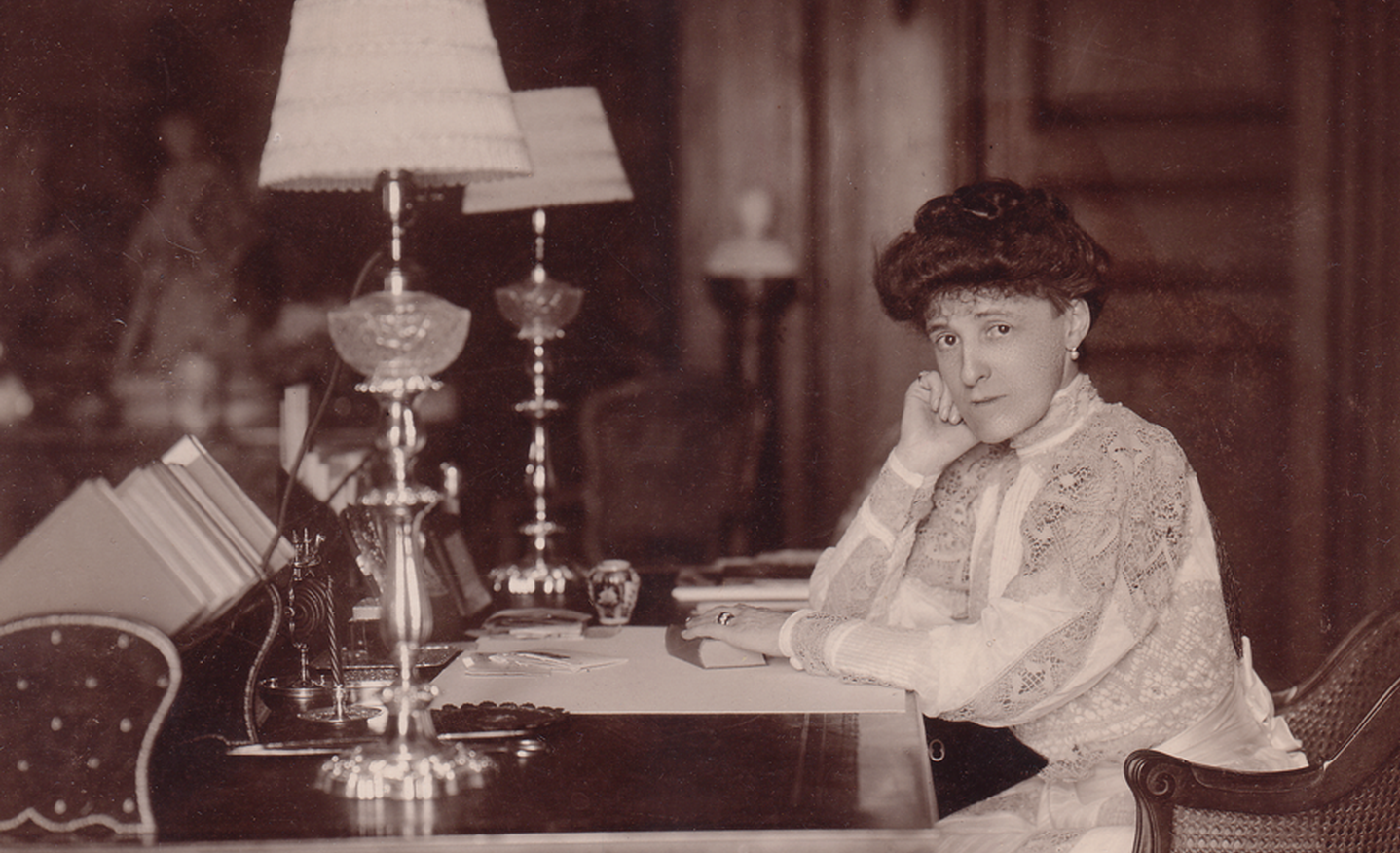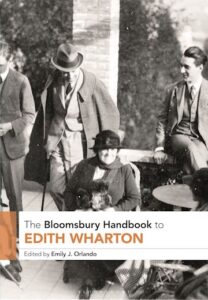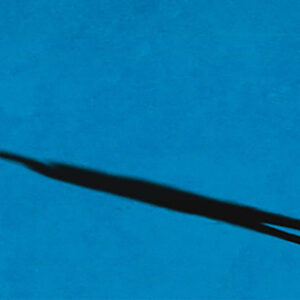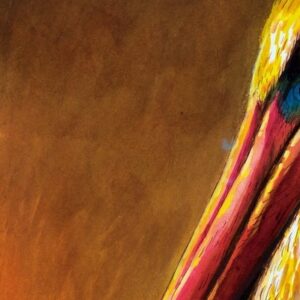
“The Future Belonged to the Showy and the Promiscuous.” How Edith Wharton Foresaw the 21st Century
Emily J. Orlando on the Writer’s Enduring Relevance and Foresight
If ever there were a good time to read the American writer Edith Wharton, who published over forty books across four decades, it’s now. Those who think they don’t know Wharton might be surprised to learn they do. A reverence for Wharton’s fiction informs HBO’s Sex and the City, whose pilot features Carrie Bradshaw’s “welcome to the age of un-innocence.” The CW’s Gossip Girl opens, like Wharton’s The House of Mirth, with a bachelor spying an out-of-reach love interest at Grand Central Station while Season 2 reminds us that “Before Gossip Girl, there was Edith Wharton.”
But why Wharton? Why now? Perhaps it’s because for all its new technologies, conveniences, and modes of travel and communication, our own “Gilded Age” is a lot like hers. For the post-war and post-flu-epidemic climate that engendered her Pulitzer-Prize-winning novel The Age of Innocence is not far removed from our post-COVID-19 reality. In both historical moments, citizens of the world have witnessed a retreat into conservatism and a rise of white supremacy.
Fringe groups like the “Proud Boys” and “QAnon” and deniers of everything from the coronavirus to climate change are invited to the table in the name of free speech and here Wharton’s distrust of false narratives resonates particularly well. Post-9/11 calls for patriotism and the alignment of the American flag with one political party harken back to Wharton’s poignant questioning, in a 1919 letter, of the compulsion to profess national allegiance:
how much longer are we going to think it necessary to be “American” before (or in contradistinction to) being cultivated, being enlightened, being humane, & having the same intellectual discipline as other civilized countries?
Her cosmopolitan critique of nationalist fervor remains instructive to us today.
Since the dramatic revival of interest in the writer in the 1990s, Edith Wharton studies has evolved from a largely US-based project grounded in feminist literary criticism to an increasingly global, multi-disciplinary enterprise. Wharton had been known, for the greater part of the twentieth century, much in the way her obituaries characterized her: novelist who chronicled Gilded Age New York, author of the sobering New England tale Ethan Frome (1911), and, following the publication of The Age of Innocence (1920), first woman awarded the Pulitzer for fiction.
For all its new technologies, conveniences, and modes of travel and communication, our own “Gilded Age” is a lot like hers.
Wharton is now embraced by specialists not only in literary, cultural, and gender studies but also architecture, art history, museum studies, fashion studies, history, sociology, and anthropology. She is studied in classrooms more frequently than ever, is the subject of a peer-reviewed journal with a broad international reach, and is regularly represented in book clubs, on “Jeopardy!,” and in frequently trending hashtags across social media. She is also the only woman to appear twice on the Modern Library’s list of “100 Best Novels” of the 20th century.
The diverse range of voices who have recently cited Edith Wharton as a formative influence or favorite writer—Roxane Gay, Brandon Taylor, Ta-Nehisi Coates, Jennifer Egan, and Julian Fellowes to name a few—suggests the writer’s attractiveness beyond the academy, across generations and demographics. In the space of six months, The New Yorker, the Atlantic, The New York Times, Vulture.com, and Entertainment Weekly prominently featured Wharton in their pages.
For its second virtual book club meeting, which took up Wharton’s 1913 masterpiece The Custom of the Country, The Times drew over four thousand participants. Currently in development is Sofia Coppola’s much-anticipated Apple TV adaptation of The Custom of the Country, a novel informed by Wharton’s command of the clash between the old guard and the new.
Edith Newbold Jones Wharton, whose family members were among Mrs. Astor’s “Four Hundred,” was groomed for a career as a leisure-class wife but ultimately transformed herself into a consummate master of the rightly celebrated fiction as well as poetry, drama, memoir, and non-fiction prose on travel, literary criticism, gardening, architecture, and design.
The very picture of cosmopolitanism, Wharton, comfortable with five languages, read voraciously and produced at an astonishing pace; as Hermione Lee has noted, “between 1897 and 1937 Wharton published at least one book almost every year of her life. (She has, altogether, forty-eight titles to her name.)” She lived and/or traveled in Italy, England, Spain, France, Germany, Morocco, and her native country before settling in France; although she questioned America’s conduct during the Great War she never renounced citizenship.
Wharton also was an unlikely war hero honored by the French and Belgian governments for her tireless philanthropic work in support of refugees. Indeed, the November 28, 1915 New York Sun wrote of Wharton that “no woman, probably no man not engaged in military service, has seen so much of the war.” A lifelong lover of dogs, she helped establish the Society for the Prevention of Cruelty to Animals. Edith Wharton’s oeuvre continually suggests that, like Walt Whitman, whom she featured in the 1924 novella “The Spark,” she is “large” and “contain[s] multitudes,” her contributions to the study of American culture extending far beyond the leisure class satires. Wharton is also, like her beloved poet, marked by contradiction.
As Jennifer Haytock and Laura Rattray have recently noted, “To study Wharton is to engage with an almost overwhelming volume of material,” some of it admittedly contradictory, “produced by a woman of enormous energies, interests, and areas of expertise.”
Edith Wharton was one of the most popular, critically acclaimed, and handsomely paid writers of her time. She was as read as she was well read. She rose to prominence for a series of well received short stories in the 1890s, collected at the century’s end as The Greater Inclination. Indeed, in the stories, which she affectionately called her “smaller realisms,” Wharton was “doing New York” long before her friend and fellow realist Henry James famously implored her to do so. She distinguished herself as an authority on interior décor and architecture with The Decoration of Houses (1897), which, written with the architect and interior designer Ogden Codman, Jr., was recently called “the most important decorating book ever written” and the “pioneering guide” to which “all modern design books owe their existence.” Her triumphant novel of social commentary The House of Mirth (1905) and subsequent fictions made her famous.
Wharton’s staying power—particularly for our current Gilded Age—confirms that her corpus yields far more than anyone could have known.
A kind of literary counterpart to the painter John Singer Sargent, Wharton was found to be particularly adept at capturing the New York aristocracy, which she critiques in “Souls Belated” (1899) as marked by “the same fenced-in view of life, the same keep-off-the-grass morality, the same little cautious virtues and the same little frightened vices.” But Wharton is also now duly recognized as a writer who fixed her gaze on the less privileged and mastered genres beyond fiction.
Wharton was a best-selling author from The House of Mirth through the release of her memoir, A Backward Glance (1934). On receiving an honorary doctorate at Yale University in 1923, which made her the first woman so honored, Wharton was celebrated by critic William Lyon Phelps, who exercised profound influence on literary tastes, as an “American novelist of international fame” who had secured “a universally recognized place in the front rank of the world’s living novelists.”
Nevertheless, a number of factors contributed to the waning of Wharton’s star in the 1920s and 1930s, culminating in what Helen Killoran has called “the lull” of the years 1938 to 1975: a resistance to realism as a mode of representation, a distrust of Victorian themes, the charges of unnecessary cruelty and pessimism, a sexist and ageist preference for art that might “make it new,” and the short-sighted notion, articulated by Edmund Wilson and re-inscribed by Alfred Kazin and Louis Auchincloss, that Wharton’s fiction after The Age of Innocence was not worth reading.
Additionally, the establishment in the 1920s of a canon of American letters that excluded women, people of color, and members of the working class did little to secure Wharton’s status. As Pamela Knights has noted, “This image of Wharton as aloof and out-of-touch intensified in the 1930s, with the rise of new forms of social realism, in the exigencies of the Depression.” The younger, modernist literary establishment found her dated. The Wharton who had lamented her status as the literary equivalent of violet, old lace, tufted furniture, and chandeliers is the same who posited, in a 1925 letter to her friend Daisy Chanler, “as my work reaches its close, I feel so sure that it is either nothing, or far more than they know…. And I wonder, a little desolately, which?” As we approach the one-hundred-year mark of that disclosure, Wharton’s staying power—particularly for our current Gilded Age—confirms that her corpus yields far more than anyone could have known.
The decades-long Edith Wharton renaissance still underway emerged from a few transformative moments in the twentieth century: the 1968 lifting of the embargo on the writer’s papers at Yale University, R. W. B. Lewis’s prize-winning 1975 biography, the 1980 discovery of Wharton’s private letters to her one-time lover, the opportunistic journalist Morton Fullerton, the 1983 founding of the Edith Wharton Society and arrival the following year of the journal now named the Edith Wharton Review, and the many recuperative studies that followed.
Four biographies succeeded Lewis’s: Cynthia Griffin Wolff’s A Feast of Words: The Triumph of Edith Wharton (1977), Shari Benstock’s No Gifts from Chance: A Biography of Edith Wharton (1994), Eleanor Dwight’s visual record Edith Wharton: An Extraordinary Life (1994), and Hermione Lee’s Edith Wharton (2007), which contributed meaningfully to Wharton’s increasingly international appeal. Susan Goodman aptly notes that in Wharton’s case “definitive biography” is an oxymoron, given the breadth of her life and work.
Readers new to the study of Edith Wharton will, it is hoped, recognize the inadequacies of earlier readings of her work. It is no longer a legitimate practice, if ever it was, to read Wharton as an imitation of her fellow cosmopolitan and friend Henry James—a comparison that made her cringe. Nor is it valid to write her off as a stuffy grand dame, the likes of which we find in prickly accounts by Vernon Parrington (1921) and Percy Lubbock (1947). Charges of Wharton as an icy elitist are complicated by the range of demographics treated in her fiction and by her enormous charitable initiatives, public and private.
She seems to have foreseen the excesses, obsessions, and spectacles of our current moment.
A reckoning with the full oeuvre also undermines any reading of Wharton as anti-feminist. Although she would not have called herself “feminist”—a term in conflict with her patrician upbringing—and she regrettably poked fun at organized feminism, scholars have recognized in her work a fierce indictment of the limitations imposed upon women’s lives. Laura Rattray has shown that the under-studied published and unpublished non-fiction reveals Wharton’s “unfettered, unapologetic feminism.”
Wharton’s politics are perhaps her greatest site of contention. Dale M. Bauer’s Edith Wharton’s Brave New Politics (1994) turned our attention to Wharton’s post-war writings to reveal an author acutely invested in the cultural debates of her moment, including reproductive rights, authoritarian politics, and mass culture. Jennie A. Kassanoff’s Edith Wharton and the Politics of Race (2004) argues that confronting Wharton’s political conservatism helps us better understand the anxieties that continue to vex American culture, namely white hegemony, changing demographics, and systemic narratives that rationalize exclusion.
Readers must wrestle with the fact that the Wharton who called attention to women’s oppression did not endorse their suffrage. It is not, of course, the task of twenty-first century readers to rescue Wharton from a “cancel culture”; among her Whitmanesque multitudes are her less salvageable political opinions. Emily Coit’s observations on Charles Eliot Norton, whose influence shaped the young Wharton, rings true for her as well:
…his elitism and racism are part of a liberalism that venerates democracy, and that liberalism is the close kin of the liberalisms that inform much educational work right up through the present. In studying a Norton who is not a villain, we confront elitism and racism that are unspectacular, cordial, full of good intentions and perhaps quite familiar.
Readers can turn to Wharton, whose corpus reflects ambivalence towards a changing class structure, to help unpack the civil divisions that came to a crescendo January 2021 in the Capitol rotunda whose walls display images of her democracy-defending forebear.
Edith Wharton’s stature as a central figure in American letters is no longer open to question and her uncanny anticipation of our culture makes her more resonant than any other writer I teach. Indeed, she seems to have foreseen the excesses, obsessions, and spectacles of our current moment. The scandals documented in Wharton’s narratives serve as harbingers of the sensations that flash across our hand-held screens. The grooming of girls for the disgraced financier Jeffrey Epstein touches on the same nerve as the sexual exploitation of minors in Wharton’s Summer (1917) and The Children (1928). The quid pro quo run-in between Wharton’s Lily Bart and Gus Trenor looks uncomfortably forward to Harvey Weinstein and #MeToo. The rise to power of Donald Trump would not in the least surprise Edith Wharton.
Wharton’s tenacious Undine Spragg of The Custom of the Country—as horrifying to progressive era readers as she is admired by Generation Z—can be conceived of as the original social media influencer conscious of her brand. For Undine and her creator know that “the future belonged to the showy and the promiscuous” and that the turn-of-the-century “world where conspicuousness passed for distinction” foreshadows our own. Wharton would describe Undine with a disclaimer we might use for a “Real Housewife”: “If only everyone would do as she wished she would never be unreasonable.”
Undine is compelled to fashion herself as a trophy wife and the sexual double standard dictating that “genius is of small use to a woman who does not know how to do her hair” would apply to Wharton herself who, on the 150th anniversary of her birth, would be assessed by a male novelist in terms of how she compares to Grace Kelly or Jackie Kennedy. The writer who would declare, in her wildly popular interior design manual The Decoration of Houses, privacy “one of the first requisites of civilized life” would be appalled by what is broadcast across social media. Wharton also would’ve anticipated the racism directed at Meghan Markle and understood why the Oprah an interview would do little to thaw relations with her in-laws. Children forcibly separated from families due to morally dubious immigration policies echo the plight of war refugees for whose welfare Edith Wharton labored, while the distrust of the cultural other echoes the writer’s own complicated nationalist allegiances.
Ten years ago, Lev Raphael declared in the Huffington Post that “Edith Wharton is hot.” She is now positively on fire. Given the extent to which Wharton foresaw our “showy and promiscuous” present, now is an ideal time to curl up with The Custom of the Country, two new paperback editions of which have appeared in the past six months. What better way to prepare for Sofia Coppola’s mini-series? Undine Spragg has been ready for her close-up for years and I like Florence Pugh for the part.
__________________________________

The Bloomsbury Handbook to Edith Wharton, edited by Emily J. Orlando, is available from Bloomsbury.
Emily J. Orlando
Emily J. Orlando is the Corrigan Chair in the Humanities & Social Sciences and Professor of English at Fairfield University. She is the author of Edith Wharton and the Visual Arts and editor, most recently, of the first annotated edition of Edith Wharton and Ogden Codman’s The Decoration of Houses, an excerpt of which appeared in Lit Hub. She has been publishing on Elizabeth Siddall and the Pre-Raphaelites since the late 1990s and recently developed a course on Taylor Swift’s literary eras.












